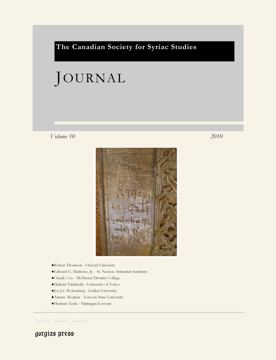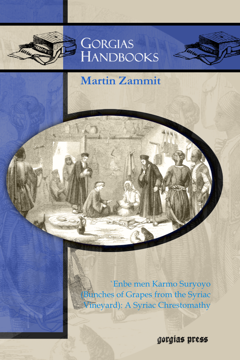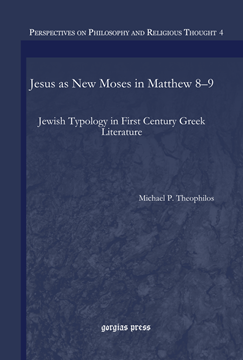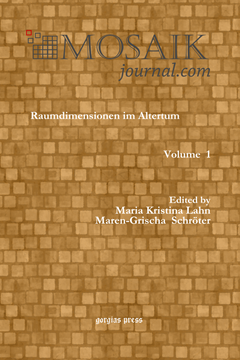Saladin
Empire and Holy War
By Peter Gubser
ISBN: 978-1-61143-670-9
Saladin, the great twelfth century Middle East leader, not only created an empire, but also reduced the Crusader presence in the Holy Land. In a comprehensive manner and clear prose, Peter Gubser describes how Saladin rose to power, conquered lands, governed peoples, and raised armies. In addition, he clearly addresses Saladin’s imperial motives, a combination of ambition and devotion to the ideal of unity in Islam.
$143.00 (USD) $85.80 (USD)
Journal of the Canadian Society for Syriac Studies 10
Edited by Amir Harrak
ISBN: 978-1-61143-671-6
Volume 10 includes articles by Robert Thomson, Edward G. Mathews Jr., Claude Cox, Hidemi Takahashi and Jos J.S. Weitenberg, and Arman Akopian. It is on Syriac-Armenian topics.
$75.00 (USD) $45.00 (USD)
The Semitic Alphabets
By Isaac Taylor
Series: Kiraz Historical Grammars Archive 36
ISBN: 978-1-61143-681-5
Isaac Taylor (1829-1901) is best known for his archaeological and philological works, especially his detailed study of the alphabets published in 1883. This book on the Semitic alphabets comprises the first volume of Taylor’s 1883 study. Taylor begins with a discussion on the invention of writing and the origin of the alphabet, then gives a discussion of three alphabetic families, what he calls the Phoenician alphabet, the Aramean alphabets (covering Palmyra, Hebrew, Syriac, Mongolian, and Arabic), and the south Semitic alphabets (covering Sabean and Ethiopic).
$176.00 (USD) $105.60 (USD)
`Enbe men Karmo Suryoyo (Bunches of Grapes from the Syriac Vineyard)
A Syriac Chrestomathy
Series: Gorgias Handbooks 6
ISBN: 978-1-61143-685-3
`Enbe men Karmo Suryoyo is a chrestomathy intended primarily for students who have covered the essentials of Syriac morphology and syntax, but it should also interest anyone who enjoys Syriac literature in general. The twenty-six selections consist of examples of Syriac prose and poetry from the second until the thirteenth centuries AD. The readings reflect a wide and varied range of subject matter. Inevitably, selections of a religious nature predominate, but historical, ethnographic, chemical, astronomical, and linguistic excerpts produced by famous Syriac authors, as well as less familiar ones, have been included. A Syriac-English glossary and an index of grammatical points are included.
$58.00 (USD) $34.80 (USD)
Second-Wave Jewish Feminism, 1971-1991
Foundational Theology and Sacral Discourse
By Luke Devine
ISBN: 978-1-4632-0084-8
This book is the definitive critical analysis of the Jewish feminist theological project in the United States, its principal theologians and its foundational, embryonic, and more elaborated sacral discursive. The monograph critically examines each of the diverse theologians, their varied perspectives, and individual contributions, and asks will a prescriptive Jewish feminist theology ever be a reality?
$160.00 (USD) $96.00 (USD)
A 16th Century Italo-Byzantine Cross
Edited by Sheila Campbell
Series: Gorgias Eastern Christian Studies 32
ISBN: 978-1-4632-0163-0
The contributors have tried to reconstruct the mingling of two cultures, Greek and Italian, in sixteenth century Venice. This is examined through the medium of a single intricately carved wooden cross, executed by a Greek carver, with adaptations suitable to a member of the Latin church. We can identify the carver who made the cross and make some speculations about his life, and how he and his art are reflective of this hybrid culture. This type of cross seems to be for personal, rather than liturgical use, and it seems to be intended for private meditation on the Passion.
$165.00 (USD) $99.00 (USD)
Festgruss an Rudolf von Roth
zum Doktor-Jubiläum 24 August 1893
ISBN: 978-1-61143-686-0
Rudolf von Roth (1821-1895) was a prominent German philologist. In this Festgruss, forty four of his colleagues and students presented him papers on various topics on the occasion of his Doctor-Jubiläum. They included luminaries like Theodor Nöldeke, William D. Whitney, Edward V. Arnold, and others. The topics discussed are mostly philological covering a wide range of eastern languages, both Semitic and Indic.
$140.00 (USD) $84.00 (USD)
Jesus as New Moses in Matthew 8–9
Jewish Typology in First Century Greek Literature
ISBN: 978-1-4632-0086-2
This volume explores the fascinating narrative structure and thematic elements of Matthew 8–9 which typologically present Jesus as the ‘New-Moses’ leading his people out of eschatlogical exile. This typology is created using imagery of Jesus’ healing diseases which find their antecedent in the Mosaic legal suit of Deut 28–30, and Matthew’s explicit citation of Isa. 53, in which the Servant is predominantly envisioned as a Mosaic figure. The intervening call narratives brings a reconstitution of the twelve tribes. The author concludes by exploring the possible rationale and motivation for Matthew’s typological association of Jesus with Moses.
$140.00 (USD) $84.00 (USD)
English Grammar Guide for Language Students
Especially students of Biblical Hebrew, New Testament Greek, Latin, and related modern languages
By Peter Burton
Series: Gorgias Handbooks 27
ISBN: 978-1-61143-864-2
Too many incoming students are fluent in English but unable to discuss the language grammatically. Introductory language courses and textbooks often assume a proficiency and familiarity with grammatical terms that is not possessed by the students. This guide delivers an understanding of English grammar starting from simple concepts and presupposing no background or vocabulary. This book is designed as a textbook and a reference for students beginning a New Testament Greek, Biblical Hebrew, Aramaic or Latin course.
$85.00 (USD) $51.00 (USD)
Raumdimensionen im Altertum
Edited by Maria Kristina Lahn & Maren-Grischa Schröter
Series: MOSAIK<i>journal</i> 1
ISBN: 978-1-61143-955-7
MOSAIKjournal was established in 2009 as an interdisciplinary e-journal primarily specializing in research on antiquity. Each volume is dedicated to a special topic of current academic interest. The aim of this new journal is to give scholars a joint forum of discussion and to synthesize results of different disciplines.
$153.00 (USD) $91.80 (USD)









